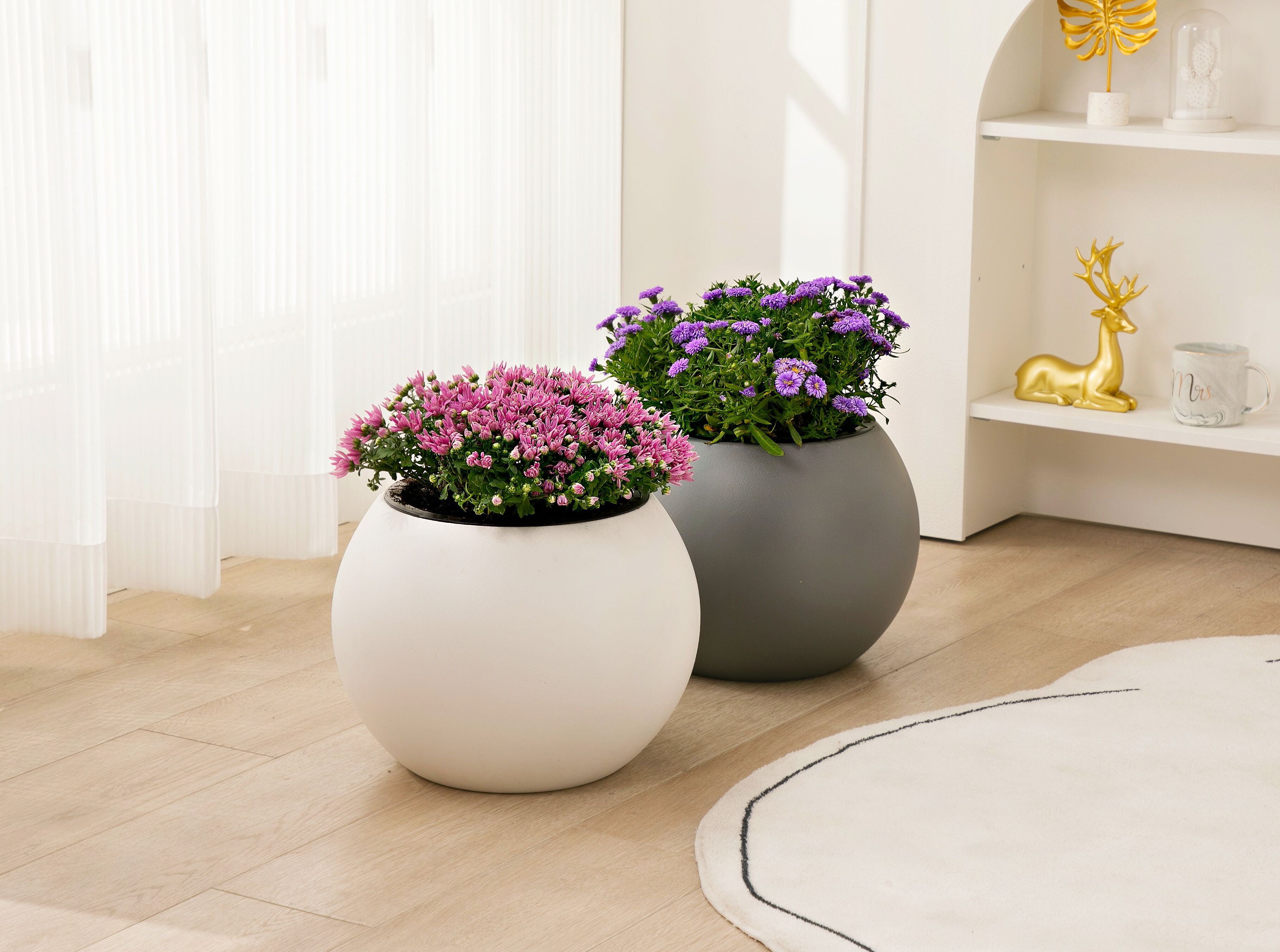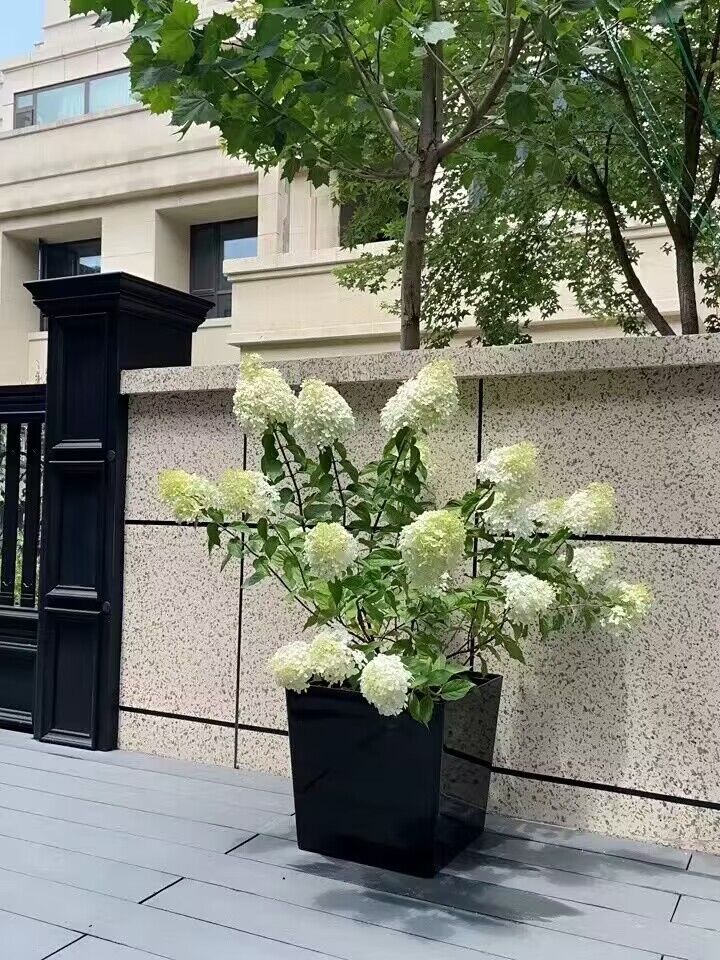The world of indoor gardening has undergone a vibrant transformation with the development and changes in colorful indoor plant pots. No longer just functional vessels for plants, these pots have evolved into stylish and dynamic accessories that complement interior decor while providing a home for our leafy companions.
Early Days and Utility:
The early days of indoor gardening were marked by simple and utilitarian plant pots. These were typically made from basic materials like terracotta or ceramic, offering a neutral and unassuming aesthetic. The primary focus was on functionality, providing a stable environment for plants to thrive indoors.
Terracotta Traditions:
Traditional terracotta pots were the staple for indoor plants. While their earthy tones offered a classic look, they lacked the vibrancy that contemporary indoor gardening enthusiasts seek. These pots were valued for their porous nature, allowing the soil to breathe and preventing overwatering.
Ceramic Classics:
Ceramic pots, often glazed for a smoother finish, were another early choice. The glazed surface added a touch of sophistication and helped retain moisture. However, the color palette was limited, with neutral tones dominating the scene.
Key Milestones in Development:
Introduction of Colors:
The turning point in the evolution of indoor plant pots was the introduction of colors beyond the traditional terracotta hues. As people embraced indoor gardening as a form of self-expression, demand grew for pots that not only nurtured plants but also added a pop of color to living spaces.
Diverse Materials:
The development of colorful indoor plant pots saw a shift towards diverse materials, including plastic, metal, and composite materials. This allowed for a broader range of shapes, sizes, and, more importantly, colors. The flexibility in materials spurred a creative exploration of bold and vibrant designs.
Innovative Shapes and Sizes:
Alongside the infusion of color, plant pots started taking on innovative shapes and sizes. From geometric wonders to whimsical designs, the market embraced diversity, offering plant enthusiasts an array of options to suit their style and the aesthetic of their homes.
Self-Watering Features:
With an increasing focus on plant care and convenience, some colorful indoor plant pots incorporated self-watering features. These innovations aimed to make plant care more accessible for busy individuals, ensuring that plants received the right amount of water without constant monitoring.
Trends Shaping the Present:
Ombre Elegance:
Ombre, the gradual blending of one color into another, has become a popular trend in colorful indoor plant pots. This stylish technique adds depth and sophistication to pots, creating a visually appealing gradient that enhances the overall decor.
Minimalistic Monochromes:
In contrast to vibrant hues, minimalistic monochromatic plant pots have gained popularity. Neutral tones like whites, grays, and blacks provide a timeless and elegant look, allowing the focus to remain on the plants themselves.
Pastel Paradise:
Pastel-colored plant pots have become a staple for those seeking a soft and calming aesthetic. From blush pinks to mint greens, pastels create a serene atmosphere that complements a wide range of interior styles.
Pattern Play:
Patterns and prints have made their way into the world of indoor plant pots. From geometric shapes to intricate designs, pots with patterns add a touch of artistry to plant displays, turning them into decorative focal points.
Eco-Friendly Materials:
Reflecting a growing consciousness towards sustainability, there's a surge in colorful indoor plant pots made from eco-friendly and recycled materials. These pots not only contribute to environmentally friendly practices but also align with the preferences of eco-conscious consumers.
Benefits of Colorful Indoor Plant Pots:
Personal Expression:
Colorful indoor plant pots provide an avenue for personal expression in home decor. Enthusiasts can select pots that resonate with their style, creating a harmonious blend between plant care and interior aesthetics.



 EN
EN  English
English 中文简体
中文简体 Español
Español























 Companies adhere to the "let plants fall in love with appropriate plant hall, let green into the tens of thousands of people for the purpose"
Companies adhere to the "let plants fall in love with appropriate plant hall, let green into the tens of thousands of people for the purpose" Fansan industry zone, Shabu Town, Huangyan, Taizhou City, Zhejiang province, China
Fansan industry zone, Shabu Town, Huangyan, Taizhou City, Zhejiang province, China +86-15325615991
+86-15325615991 +86-0576-81109093
+86-0576-81109093 +86-0576-81109093
+86-0576-81109093 yizhitang001@gmail.com
yizhitang001@gmail.com